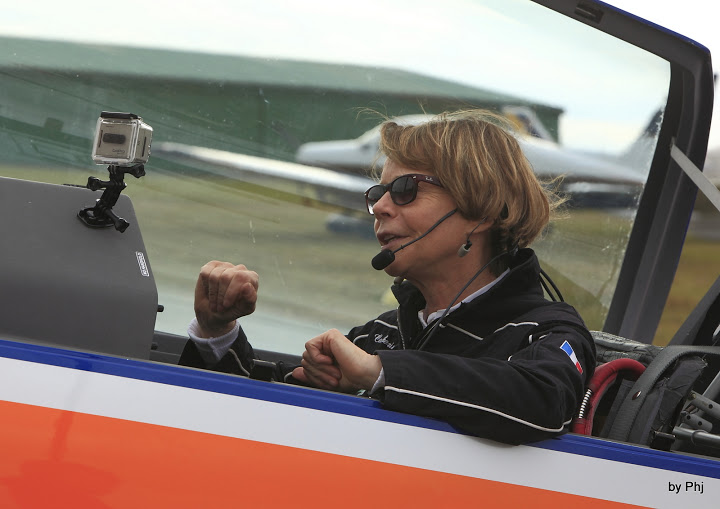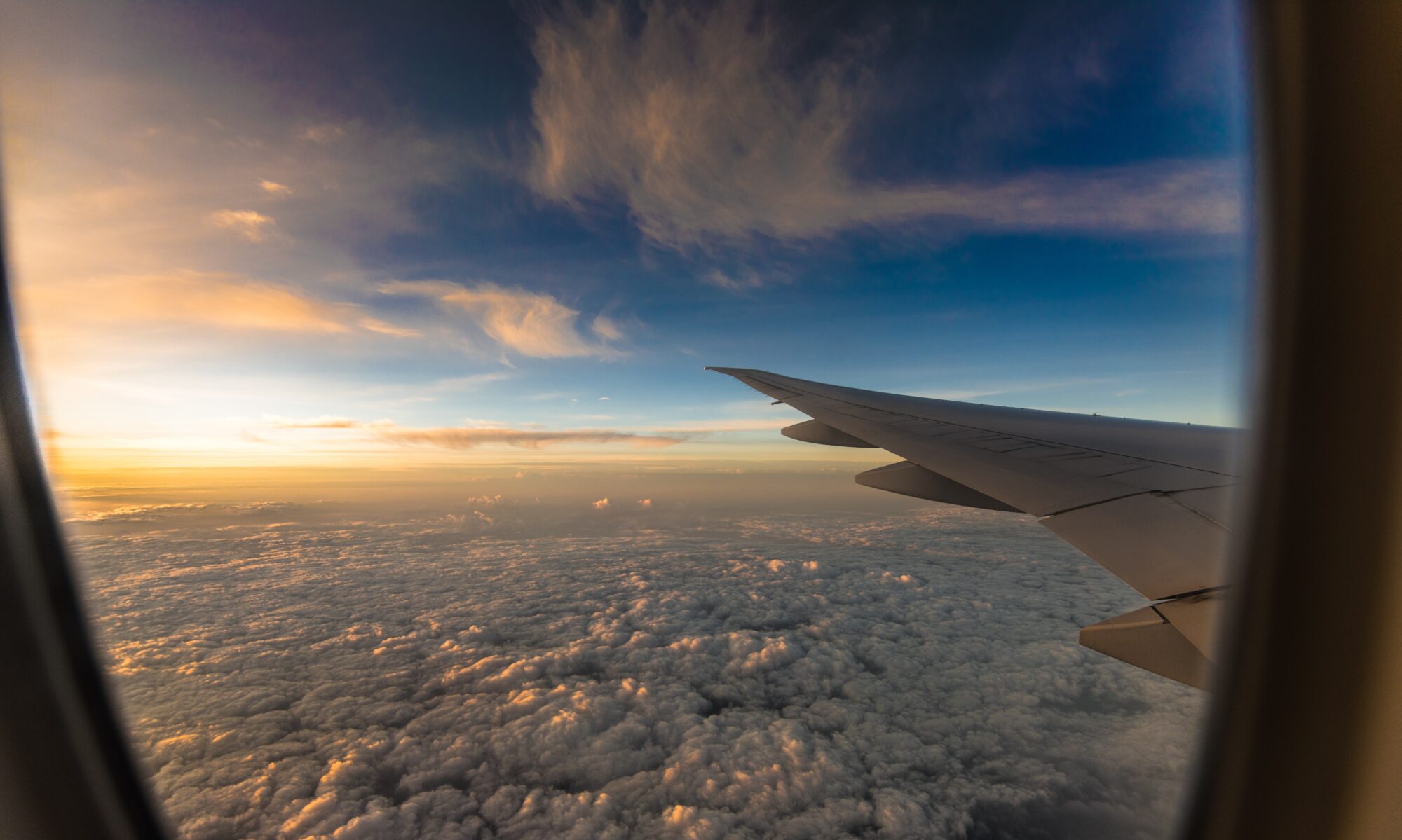CATHERINE MAUNOURY*

“What the caterpillar calls the end of the world, the master calls a butterfly.”
The author of this quote, which seems so well suited to our times, is none other than Richard Bach, the “father” of Jonathan Livingstone Seagull. Aaah… Jonathan! Able to perform 32 vertical hesitation rolls followed by a few snap rolls! The obvious illustration springing to mind as we are rooted to the ground! When will we be able to fly the azure road once again? Was it only yesterday, or was it over a century ago? At the turn of the twentieth century, crowds converged to Rheims or Brescia eager to discover Those Magnificent Men in their Flying Machines fulfilling one of the most astounding and age-old dreams of humankind: flying! Thanks to science, thanks to technology, thanks to the genius and audacity of a few, humans owned a sky now just within reach.
Halted dreams?
The Aéro-Club de France history is intertwined with this fascinating conquest of the skies through the support it gave to its pioneers, having challenged them, having opened wide the doors to a future to which aircrafts would bring a 3rd dimension. Steps forward were giant steps: sixty years only between Louis Blériot’s achievement over the Channel and three accomplishments occurring in 1969: the first flight of a Concorde aircraft; the first flight of a Boeing 747; and the first person to step on the moon! Barely born, aviation was already flying at Olympic velocity: ever faster, ever higher, ever further. And just a few weeks ago with the utter conviction of prosperous heirs, we spoke of air transportation projected to grow by 5% per annum, reaching 8 billion air travellers by 2037, translating into the purchase by airlines of 40,000 aircrafts. By that time, we will also have flown back to the moon as well as be aiming for Mars.
But a virus abruptly brought our headlong drive to a grinding halt—and possibly our dreams as well. Not a virus attacking our IT systems, our technologies and our economies; not a gigantic natural disaster either: no, it was an unknown mutant biological virus targeting us humans. Even the financial realm, imperious up to now, had to keep silent just like the rest of the world, mute and voluntarily confined to save the largest possible number of human lives. From now on, we will never be able to claim again that it is impossible to stop the reigning economy in its tracks, nor its bulimia, nor its insanity…
We need aviation to face the future
We are still in the midst of this huge turmoil and, we certainly hope, halfway across the ford, asking ourselves already a number of questions. Will we be able to draw all lessons to be learned from this crisis? Will we be able to alter our course? Will we decide to put people at the heart of our concerns, of our “investments”? Having given our environment a nice break, will we maintain our course promoting respect for natural life, its diversity and its vulnerability? Which economy will we choose tomorrow, having been so quick to close our ears to the voices of sirens singing and luring us until… was it just last month? What will our production and consumption habits become now?
Aviation obviously doesn’t hold all the answers to the questions facing us. I remain nevertheless convinced that since its inception, aviation has carried the values that we will once again need to confront and shape our future. I have already listed some of these values — genius, courage, audacity. To those, I wish to add ‘team spirit’ which, at the scale of our planet, is best expressed by a quote dear to our astronaut friends: “We are all aboard the same spaceship Earth!” A spaceship that we know is unique, fragile and even under threat. We must therefore imperatively put these values into practice so that tomorrow will fare better than today or yesterday! We absolutely need aviation!
Toward a cleaner sky
Indeed, I am not embarrassed by what I have written: we need aviation in order to tackle the future. I am not impervious to rumours of flygskam, i.e., thesecalls to being “ashamed of flying”, but I find them wrong, far too reductive and simplistic. We must take care that social media and the smirch they spread in the world’s collective unconscious does not influence our common sense or make us forget what aviation is made of, having always pushed beyond its own limits and accepted unbelievable challenges. Yesterday the aviation industry’s main challenge was safety. It is today the safest travel mode in the world. And today, in fact for a good many years now, concern for the environment has been of the essence in aeronautics, and the French General Directorate for Civil Aviation even view this as a priority concern. But first, we must highlight what the Chaire Pégase academics and scientists have observed: air transportation accounts for a moderate share of all polluting emissions. Out of the 14% of carbon dioxide emissions produced by the transport industry, aeronautics account for a modest share of 2 to 3%, a contribution it must naturally endorse when fighting against pollution. In addition to the Clean Sky Programme (commitment of the aviation industry to its 2050 targets i.e., having cut its CO2 emissions by 75%, and its NOx and noise levels by 90%) and in addition to the developments introduced to engines in order to drastically reduce fuel consumption (a 30% drop for an A320 compared to the ‘90s), numerous large-scale initiatives have been launched by governments, and by industrial and private stakeholders. I shall only name a few: the ‘Carbon Offsetting and Reduction Scheme for International Aviation’ (CORSIA); electric, solar and hydrogen propulsion for ever heavier aircrafts; biofuels; optimisation of air routes; and composite and lighter materials. Gazes, explorations and intentions are already turning to the next challenge facing aeronautics.
Extraordinary progress serving humanity
Richard Bach was right: shedding one’s skin, morphing into something different never fails to have a tragic ring to it. How can a caterpillar imagine itself as a butterfly? Where will we find the courage, the patience to project ourselves into the future, looking to days ahead for which we have no blueprint whatsoever? Innovation is truly difficult, taking one step at a time with no assurance of discoveries, or of succeeding in overtaking current innovations, of morphing once again. Yet do you really think that the pioneers of aviation, over one century ago, those who were the patrons of the newly established Aéro-Club de France, had the slightest idea that it would soon be possible to cross the Atlantic in a few hours or to walk on the moon? We must claim again for ourselves the spirit of these pioneers and believe that there is more to progress than mere technological innovation; it’s a prerequisite but it isn’t enough. Such progress must place itself truly at the service of humanity. This novel and unexpected crisis has given us the opportunity not to stop and backtrack, but to forge ahead towards the future, towards new routes generating economic development and creating new jobs.
Dare I remind the reader that fossil fuels, for which we must now find a more prudent use, freed human beings and allowed watercrafts to forego forever the most efficient propulsion mode i.e., galley slaves! Without question, we will succeed in helping the world of aeronautics regain its original significance and at the same time, we will not forget that flying is never an ordinary experience but indeed one of the most beautiful, gratifying and useful human achievements. We love and we need commercial and military aviation; aircraft manufacturers, from the smallest to the largest; the conquest of space; general aviation, its champions and its air shows; business aviation; helicopters and all those engaged today in a non-profit and solidarity driven activity benefiting our health, our protection and our economy; those who fly in hastily imported masks or rush our greatly distressed emergency patients to ICUs… at least wherever no decision had been made to dismantle the heliports of our towns or those on our hospital roofs. No technology is danger-free or free of any negative consequence on humans and on their environment. So, it is up to us to learn to make use of it in a reasoned way, a fair way, based on health, solidarity and equality. And that might just be what we are in the process of (re)discovering, coerced by a virus and living in confinement.
Trust and passion
I trust you! That is, I trust in the spirit that prevailed at the birth of aviation and during its development: in spite of so many errors, failures and mistakes, there have been innumerable successes, achievements and going beyond ourselves, in other words genuine progress. Why was that so? Because flying is a passion and must remain just that. Flying is never given and always received, learned (even conquered after having conquered oneself). That is exactly what I feel every time I look at the portraits of those who came before me at the Aéro-Club de France: true pioneers of the future. The time has come to be once again the visionary and powerfully imaginative women and men that we used to be, because we can only invent what we are capable of imagining. And the Aéro-Club de France will be proud to become a favourite setting where imagining, engaging and promoting can take place. The Club has already set out on this course, for instance by helping organise environmentally friendly air shows. The Club is also keeping close tabs on the world of aeronautics in order to fulfill its role of convening all forms of aviation.
My wish is for our Aéro-Club to tackle the times to come with the same spirit, the same enthusiasm and the same team spirit as the one passed down to us, and of which we are so proud.
* Cathrine Maunoury is the President of the Aéro-Club de France, a twice World Champion in Aerobatics and a Lecturer. We thank her for the authorisation to translate and publish this article.

